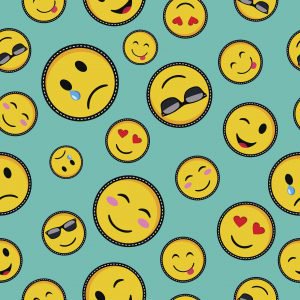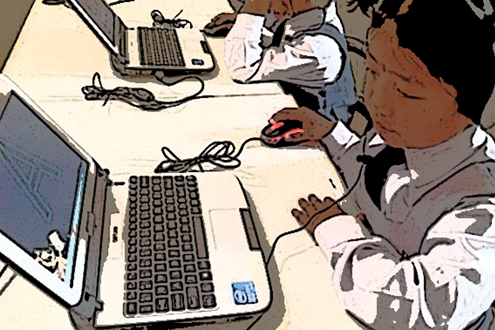 Sixty students from 170 countries in New York City presenting their work at the United Nations (UN) General Assembly Hall, after a week interacting and discussing complex global issues—that is the joyful finale of the Many Languages, One World (MLOW) Essay Contest and Global Youth Forum.
Sixty students from 170 countries in New York City presenting their work at the United Nations (UN) General Assembly Hall, after a week interacting and discussing complex global issues—that is the joyful finale of the Many Languages, One World (MLOW) Essay Contest and Global Youth Forum.
MLOW gives students the opportunity to work together in transnational, multilingual teams to address complex global issues related to the United Nations 2030 Agenda for Sustainable Development (SDGs) and to develop action plans for implementation in their own countries, thinking globally and acting locally.It is important to look at the multilingualism of MLOW from the perspective of world language educators. In addition to all its other strengths, MLOW is also a wonderful global example of “translingual” and “transcultural” competence. It is equally important to look at the language skills and intercultural competencies demonstrated by the MLOW student winners, which are beyond impressive.
Based on the vision of J. Michael Adams, the late president emeritus of Fairleigh Dickinson University, MLOW is intended to highlight the significance of multilingualism in global citizenship. Organized by ELS Educational Services and the United Nations Academic Impact (UNAI), under the leadership of co-founders Mark Harris, president emeritus of ELS, and Ramu Damodaran of the UNAI, and hosted on a local campus, the Many Languages, One World Essay Contest and Global Youth Forum invites college and university students to submit an essay on an assigned topic in a learned second language that is also one of the official languages of the UN. Launched in the fall of 2013, MLOW completed its fourth edition in 2017, having been hosted on the campuses of Adelphi, Hofstra, and Northeastern universities.
The MLOW Experience
MLOW is typically announced in the late fall or early winter, with essays due in February or March. Full-time college and university students at least 18 years of age may enter by submitting an essay of no more than 2,000 words in a learned second language on an assigned topic related to the role of multilingualism in global citizenship. Essays are evaluated, and finalists are interviewed by Skype in the late spring, with winners selected—ten for each of the six official languages—in late spring.
The student winners are brought to the U.S., all expenses paid, where they participate in a youth forum and prepare their UN presentations, which they deliver in the General Assembly Hall of the UN. A celebratory luncheon in the Delegates Dining Room at the UN is followed by sightseeing in New York City (and, in 2017, Boston as well) before the students return home.Over its history, the MLOW experience has varied only slightly, in terms of its length, which has increased by several days, and in terms of the host campus—Adelphi University in 2014 and 2015, Hofstra University in 2016, and Northeastern University in 2017.
Another variation was that, in 2015, 70 winners were selected in recognition of the 70th anniversary of the signing of the UN Charter. In 2017, a reflection session at the Institute of International Education (IIE) after the day at the UN was added, with students and facilitators making a personal commitment to the SDGs.
The most visible change has been the addition of the Northeastern University Global Youth Conference in 2017, extending the student stay by several days and giving the student winners the opportunity for Boston visits and sightseeing. In terms of the learning experience, in 2017, more emphasis was placed on student research, with the student winners working with the language facilitators on research related to their country-specific action plans during the weeks leading up to MLOW.
The student winners in each language group were also able to hear the research presentations on the specific SDG assigned to the group by each group member as it related to his or her country.In keeping with the theme of sustainable change, the role of the facilitators is inspired by the spirit of appreciative inquiry, which focuses on a positive approach in bringing about change.
Despite the serious nature and complexity of the global issues, the focus on the potential impact of young voices from around the world as change agents generates positive dialogue, potential solutions, and proactive action plans.
MLOW and Multilingualism
It is important to remember exactly what has brought the student winners to MLOW and to the UN. Of course, knowledge of one of the six official languages of the UN as a second language is the first reason that comes to mind, but is it the only one?
It is interesting to think about the students during the entire contest cycle, from the moment that the contest is announced, online and on many college campuses around the world.Busy students, in the middle of an academic year, take on the challenging and time-consuming task of writing a 2,000-word essay on a relatively abstract topic—related to multilingualism and global citizenship—in a learned second language. The thousands of applicants each year (over 2,000 in 2017) are highly accomplished language students, creative thinkers, and focused young adults with the discipline and mindset to opt for deep thought in a distracted, multitasking environment.
Representing 1,950 universities around the world in 2017, the student winners have largely accomplished this feat on their own.The now-250 MLOW winners are memorable in many additional ways—charismatic, with world-class social skills, and demonstrating impressive public-speaking skills and great courage as they make their way to the U.S.—sometimes against great odds, and at some risk—and then take their place at the podium in the General Assembly Hall of the United Nations, where they deliver their presentations.
It is possible that their ability for “deep work,” requiring sustained solitary effort, as well as their creativity and problem-solving ability, demonstrated both in their essays and in their UN presentations, have been enhanced by their experiences learning and mastering multiple languages. The skills developed by the young language learner are precisely those skills that are apparent at such a high level among the MLOW winners.
Just as multilingualism has been related to problem solving, creativity, and increased mental acuity in older age, the process of foreign language learning—requiring focus, concentration, and continued effort—may be key for these high-performing young adults, many of whom have gone on to continued high-level international involvement, further university study, and successful emerging careers.These are all reasons to encourage language study and learning among as many young people as possible, yet sadly, the majority of U.S. students do not study world languages, and the vast majority of U.S. adults are not able to carry on a conversation in a language other than English. Of the 60 MLOW 2017 student winners, two were from the U.S.
The MLOW Effect
MLOW is a multilayered transformational experience for all the participants, with student winners actually meeting each other, their facilitators, and other staff in person for the first time after months of contact via email and, in the case of the interviewers, via Skype. For many student winners, it is their first trip to the U.S., and for some, their first trip beyond their countries or regions.Their excitement quickly dissipates the little, if any, shyness that may have existed.
New friends are quickly found, and laughter, as well as serious conversation, fills the student residence halls, cafeterias and dining halls, classrooms, and campus walkways.The multilingual student winners, generally fluent in several languages, have no difficulty communicating—in the language of their winning essay within their working groups, or in a regional language or a global language that they share. Conversations beginning in one language can often be heard switching to a second or third language as different participants join or leave the conversation and sometimes revert back to the original language or another language the students have in common.
The camaraderie within and across the language groups, and teamwork within the language groups as the student winners race against time to complete their UN presentations, are inspirational, especially when the diversity of the students is taken into consideration, confirming the importance of diversity in creativity and teamwork.The strength of the bonds of friendship and respect among the students is evident during the event, but further demonstrated by the ongoing relationships that have existed now over several years among winners past and present, via social media and numerous mini-reunions and encounters at subsequent international student events and programs.The story of the MLOW winners and the MLOW experience will continue to unfold as these remarkable young people continue to make their way—and make their mark—in a globalized world.
Future Directions
The MLOW experience is transformational and inspirational on many levels. Although the student winners have written masterful essays, the prospect of speaking at the UN, before a large audience and viewed around the world on UN Web TV, must be daunting for more than a few, who bring both intellect and courage to the task, performing beautifully, for the world to see.
It is also interesting to observe the strength of the relationships that develop among students from such diverse cultures and backgrounds, brought together for a brief period of time. However, the incredible impact of the framing concept—that multilingualism plays a significant role in the development of global-citizenship mindset and values—is clearly and incontrovertibly demonstrated by the quality of the research and writing, dialog and conversations, and the high-stakes UN presentations created and delivered by these students.Action steps for world language and international education supporters interested in supporting the development of advanced levels of foreign language proficiency include working together with academic, governmental, and corporate partners to support high-profile events at all levels that mirror and echo the MLOW commitment to multilingualism.
The question we should ask ourselves, our children, and our communities is no longer “Why study a foreign language?” but rather “Why not?” and Why not now?”
Concluding ThoughtOne of the student winners sums up the spirit of MLOW and the power of multilingualism in her UN presentation on gender equality, Goal #5, delivered in French, the learned second language of her winning essay, when she said, “Les portes étaient fermées. Non, elles me semblaient fermées. Afin de les ouvrir, je me suis munie de l’arme redoutable de la génération millénaire, je me suis munie de ma plume.” (The doors were closed. No, they seemed closed to me. In order to open them, I used the formidable weapon of the millennial generation—I used my pen.)
References
Cain, Susan. (2012). Quiet: The Power of Introverts in a World that Can’t Stop Talking. NY: Crown.Dreifus, Claudia. “The Bilingual Advantage.” http://www.nytimes.com/2011/05/31/science/31conversation.html Florida, Richard. (2008). Who’s Your City?: How the Creative Economy Is Making Where to Live the Most Important Decision of Your Life. NY: Basic.MLA. (2007). “Foreign Languages and Higher Education: New Structures for a Changed World.” https://www.mla.org/Resources/Research/Surveys-Reports-and-Other-Documents/Teaching-Enrollments-and-Programs/Foreign-Languages-and-Higher-Education-New-Structures-for-a-Changed-World Kharkhurin, A. (2012). Multilingualism and Creativity. Bristol, UK: Multilingual Matters.Livermore, David. (2016). Driven by Difference: How Great Companies Fuel Innovation through Diversity. NY: AMACOM. Many Languages, One World. https://www.manylanguagesoneworld.org/McComb, Chris. (2001). “About One in Four Americans Can Hold a Conversation in a Second Language.” http://www.gallup.com/poll/1825/about-one-four-americans-can-hold-conversation-second-language.aspx MLA Enrollment Survey. https://www.mla.org/Resources/Research/Surveys-Reports-and-Other-Documents/Teaching-Enrollments-and-Programs/Enrollments-in-Languages-Other-Than-English-in-United-States-Institutions-of-Higher-Education National K–12 Foreign Language Enrollment Survey. https://www.americancouncils.org/ForeignLanguageSurveyNewport, Cal. (2016). Deep Work: Rules for Focused Success in a Distracted World. NY: Grand Central.Student Essay Contest and Global Youth Forum. (July 2017). “Many Languages, One World.” http://webtv.un.org/search/student-essay-contest-and-global-youth-forum-many-languages-one-world/5516444897001/?term=many%20languages%20one%20world&sort=dateUN. The Sustainable Development Goals. http://www.un.org/sustainabledevelopment/sustainable-development-goals/Weiner, Eric. (2016). The Geography of Genius: A Search for the World’s Most Creative Places from Ancient Athens to Silicon Valley. NY: Simon and Schuster.Cooperrider, David. “What Is Appreciative Inquiry?” http://www.davidcooperrider.com/ai-process/
Kathy Stein-Smith, PhD, is associate university librarian and adjunct faculty in foreign languages and related areas at Fairleigh Dickinson University–Metropolitan Campus, Teaneck, New Jersey. She is chair of the AATF (American Association of Teachers of French) Commission on Advocacy. She is a member of the ATA (American Translators Association) Education and Pedagogy Committee, the CSCTFL (Central States Conference on the Teaching of Foreign Languages) Advisory Council, and the NECTFL (Northeast Conference on the Teaching of Foreign Languages) Advisory Council. She also serves as French language facilitator at MLOW (Many Languages, One World). She is the author of three books and several articles about the foreign language deficit, has given a TEDx talk, “The U.S. Foreign Language Deficit—What It Is; Why It Matters; and What We Can Do about It,” and maintains a blog, Language Matters (https://kathleensteinsmith.wordpress.com/).
 A new study released by the Institute of International Education’s Center for Academic Mobility Research and Impact reveals positive impact for study abroad participants in the job market post-graduation. Participating in study abroad is known to increase global competence, including language skills and cultural literacy. However, there have previously been no measurable basis to determine what is needed to be globally competent and what should be taught in study abroad programs.
A new study released by the Institute of International Education’s Center for Academic Mobility Research and Impact reveals positive impact for study abroad participants in the job market post-graduation. Participating in study abroad is known to increase global competence, including language skills and cultural literacy. However, there have previously been no measurable basis to determine what is needed to be globally competent and what should be taught in study abroad programs.


 Sixty students from 170 countries in New York City presenting their work at the United Nations (UN) General Assembly Hall, after a week interacting and discussing complex global issues—that is the joyful finale of the Many Languages, One World (MLOW) Essay Contest and Global Youth Forum.
Sixty students from 170 countries in New York City presenting their work at the United Nations (UN) General Assembly Hall, after a week interacting and discussing complex global issues—that is the joyful finale of the Many Languages, One World (MLOW) Essay Contest and Global Youth Forum. It’s a popular belief that alcohol helps improve speaking skills for a foreign language, but the belief can be easily passed off as a perceived improvement instead of an actual improvement. A new study has confirmed, however, that acute alcohol consumption may have beneficial effects on the pronunciation of a foreign language.
It’s a popular belief that alcohol helps improve speaking skills for a foreign language, but the belief can be easily passed off as a perceived improvement instead of an actual improvement. A new study has confirmed, however, that acute alcohol consumption may have beneficial effects on the pronunciation of a foreign language. The Migration Policy Institute and the National Center on Immigrant Integration Policy have released a new report on the young Dual Language Learner (DLL) population in California. The report was pooled over the 2011-2015 period of children 8 and under, and found that these DLL’s with at least one parent who speaks a language other than English at home are less likely than their English-only peers to access high-quality early childhood programs even though they benefit disproportionately from such services.
The Migration Policy Institute and the National Center on Immigrant Integration Policy have released a new report on the young Dual Language Learner (DLL) population in California. The report was pooled over the 2011-2015 period of children 8 and under, and found that these DLL’s with at least one parent who speaks a language other than English at home are less likely than their English-only peers to access high-quality early childhood programs even though they benefit disproportionately from such services. UAlbany professor part of team looking at collaboration among astrophysicists in the United States and France
UAlbany professor part of team looking at collaboration among astrophysicists in the United States and France In honor of National Dyslexia Awareness Month, Eric Horowitz examines this learning difference and suggests assistance to help students overcome it
In honor of National Dyslexia Awareness Month, Eric Horowitz examines this learning difference and suggests assistance to help students overcome it
 Digital assessment helps a California
Digital assessment helps a California



